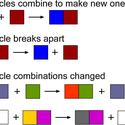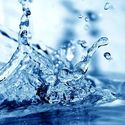Find out about the physical and chemical properties of the ocean and explore the ocean’s role in transporting heat1, water, salt2 and carbon3 around the Earth.
This resource provides explanations of the key concepts encountered when exploring the ocean in action – the ‘basics’ that every student should understand.
- Ocean
- Sea
- Oceanography
- Seawater
- Salinity
- Ocean current
- Earth systems
- Carbon cycle
- Carbon dioxide
- Density
Ocean
The ocean is a continuous body of salty water covering two-thirds of our planet4. Five main regions of the ocean have been given the names Pacific, Atlantic, Indian, Arctic and Southern Oceans.
Sea
Smaller parts of the larger oceans are named seas, such as the Tasman Sea between New Zealand and Australia. Other seas are almost surrounded by land but are still connected to an ocean.
Oceanography
The study of the physical, chemical and biological processes of the ocean. Scientists who study these aspects of the ocean are called oceanographers.
Seawater
Seawater contains chemicals5 that make it different to freshwater. It has important properties that vary from place to place – for example, parts of the ocean are more or less salty, warmer or cooler.
Salinity
Salinity6 is a measure of the saltiness of seawater. It is caused mostly by the chemical sodium chloride. Salinity is an important property7 – salt makes seawater denser than freshwater.
Ocean current
There are two main causes for the large-scale movements of ocean water called currents. Surface currents are mostly pushed by the wind. Deep currents are caused by changes in the density8 of the water.
Earth systems
The Earth functions as a dynamic9 system of many interrelated parts. There are 4 main subsystems – the hydrosphere10 (water), atmosphere11 (air), geosphere12 (solid Earth) and biosphere13 (living things).
Carbon cycle
Carbon is a chemical element14 vital to all living things and is also present in many non-living things. Carbon circulates around the planet in what is called the carbon cycle15. It moves through the carbon cycle in stops and starts. An individual atom16 might pass through plants, animals and the atmosphere in a matter of days, yet stay trapped in rocks for millions of years.
Carbon dioxide
Carbon dioxide17 (CO2)is a gas that plays an important part in the carbon cycle. It makes up just 0.004% of the atmosphere, yet with the more abundant water vapour18, it soaks up infrared radiation19 (heat) from the Earth’s surface and stops it from escaping into space.
Density
Density is a measure of how tightly a certain amount of matter20 is packed into a given volume21. The more the matter is packed in, the higher the density. Density can be calculated by dividing an object’s mass22 by its volume.
- heat energy (heat): Heat energy: the transfer of energy in materials from the random movement of the particles in that material. The greater the random movement of particles the more heat energy the material has. Temperature is a measure of the heat energy of a material.
Heat: the flow of energy from a warm object to a cooler object. - salt: In chemistry, a salt is produced when a strong acid and strong base react. Strong acid + strong base = salt + water.
- carbon: A non-metal element (C). It is a key component of living things.
- planet: In our Solar System, a planet is defined as an object that orbits the Sun, is big enough for its own gravity to make it ball-shaped and keeps space around it clear of smaller objects.
- chemicals: Everything is made up of chemicals. All matter (anything made of atoms) can be called chemicals. They can be in any form – liquid, solid or gas. Chemicals can be a pure substance or a mixture.
- salinity: The amount of chemicals dissolved in water. In seawater, the main chemical is sodium chloride (salt), but there are many others in smaller quantities.
- property: A physical or chemical property is a physical or chemical state of a substance that can be measured. Any changes can be used to describe transformations between states.
- density: How tightly a certain amount of matter (atoms or molecules) of a substance is compacted in a given volume. Density is commonly measured in grams per millilitre (g/ml) or cubic centimetre (g/cm3).
- dynamic: In science, a process or system characterised by constant change.
- hydrosphere: All the water on Earth, whether it is liquid, solid (ice and snow) or vapour (in the atmosphere).
- atmosphere: 1. The layer of gas around the Earth. 2. (atm) A non-SI unit of pressure equivalent to 101.325 kPa.
- geosphere: The solid part of Earth – land and rock.
- biosphere: The parts of the land, sea and atmosphere in which organisms are able to live.
- element: A substance made of atoms that all have the same atomic number. Elements cannot be split into simpler substances using normal chemical methods.
- carbon cycle: The process by which carbon passes through the natural world.
- atom: The smallest possible unit of matter that still maintains an element’s identity during chemical reactions. Atoms contain one or more protons and neutrons (except hydrogen (H), which normally contains no neutrons) in a nucleus around which one or more electrons move.
- carbon dioxide: CO2 is a colourless, odourless, incombustible gas. It is a product of cellular respiration and combustion and is an essential component in photosynthesis.
- water vapour: The gas phase of water.
- infrared radiation: Electromagnetic radiation with longer wavelengths than those of visible light. Although infrared radiation is not visible, we sense it as heat. The Earth is warmed by infrared radiation from the Sun. The waves produce heat in all objects they strike.
- matter: The basic structural component of all things that have mass and volume.
- volume: 1. The quantity of space occupied by a liquid, solid or gas. Common units used to display volume include cubic metres, litres, millilitres, tablespoons and teaspoons. (Volume can refer to a large quanity of something). 2. The degree of sound intensity or audibility; loudness.
- mass: The amount of matter an object has, measured in kilograms.





